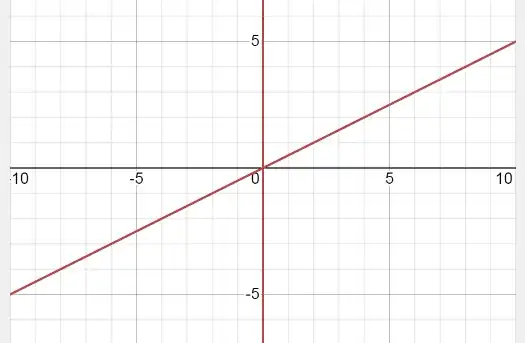Suppose I am given the equation $x=2y$.
My interpretation of this equation is $A=\{\langle x,y \rangle \in \mathbb R \times \mathbb R |\ x=2y\ \}$
Given this interpretation, I want to know the difference between the equations $x^2=4y^2$ and $x^2=2yx$.
For the equation $x^2=2yx$, we have a single line that completely overlaps with $x=2y$.
For the equation $x^2=4y^2$, we have two intersecting lines, only one of which overlaps with $x=2y$.
In either case, this is satisfying because it explains the logical concepts of:
$$x=2y \implies x^2=4y^2$$ $$\text{and}$$ $$x=2y \implies x^2=2yx$$ which I feel as though I am implicitly using during different algebraic proofs. That is to say, the set of solutions for $x=2y$ also satisfies (intersects with) the equations (sets) $x^2=4y^2$ and $x^2=2yx$.
In line with our earlier set interpretation, letting $x^2=2yx$ represent the set $B=\{\langle x,y \rangle \in \mathbb R \times \mathbb R | x^2=2yx\}$ and letting $x^2=4y^2$ represent the set $C=\{\langle x,y \rangle \in \mathbb R \times \mathbb R | x^2=4y^2\}$, the aforementioned implication suggests $A \subseteq B$ and $A\subseteq C$.
However, given my descriptions of the graphs, it is quite clear that we can be more specific...namely:
$A=B$ and $A \subsetneqq C$
I see that for the equation $x^2=4y^2$, square rooting both sides yields $\pm x=2y$, which explains its graph of the two intersecting lines. But I am wondering if there is a more fundamental reason that explains this observation. In particular, the quality of inverse exponents versus the quality of inverse multiplication.
To simplify $x^2=2yx$, I am effectively multiplying each side by $x^{-1}$. Comparatively, to simplify $x^2=4y^2$ (perhaps better written as $x^2=(2y)^2$), I am taking the inverse operation of squaring. It seems like the inverse operation of squaring yields "more solutions" than the inverse operation of multiplication.
Any added insight would be greatly appreciated!

